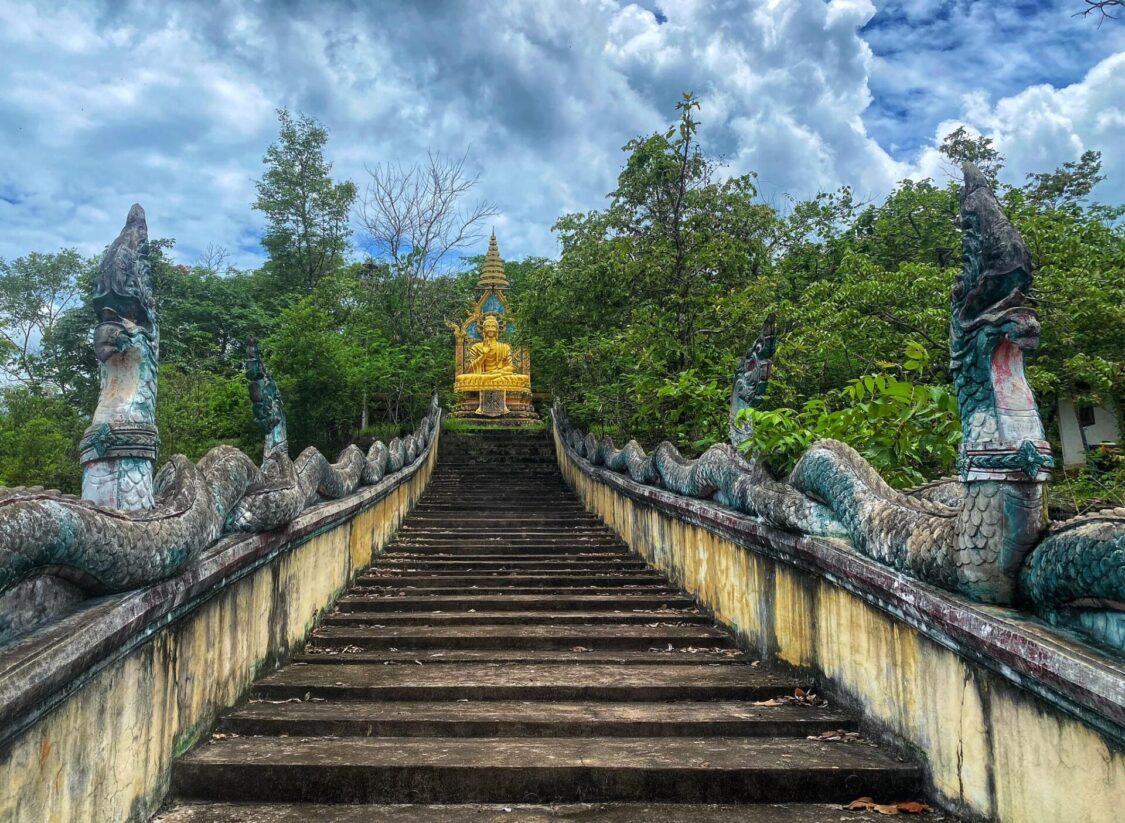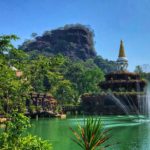Thailand’s Hidden Temples – Undiscovered Travel

Thailand is known for its majestic temples, like Wat Phra Kaew, which attract millions of visitors every year. However, Thailand has hundreds of relatively hidden temples, which remain undiscovered to even Thai tourists and are known only by nearby locals.
I was reminded of hidden Thai temples, when I discovered a new one myself only a few kilometers from my farmhouse in Sakon Nakhon (Northeast Thailand). I was traveling along a small village road, when I saw a strange set of steps leading down a little canal embankment into the forest. I got off my motorcycle (the best travel method for spotting secret temples) to investigate.
The steps led to an overgrown foot path. I kept walking to see it suddenly open up into a beautiful volcanic area where the monks of the nearby temple Wat Phu Danhang stay. This Buddhist retreat is called the Kàyt Phút-tá-sà-tăan (เขตพุทธสถาน) of Wat Phu Danhang (วัดภูดานฮัง).
I have discovered a number of hidden temples in Thailand over the years, and rarely ever mention them publicly, so that the monks don’t get disturbed by foreign tourists. However, this forested temple area is being developed to attract visitors who wish to enjoy the peaceful atmosphere, meditate, make merit, and pay respects to the large hilltop Buddha statue, sacred footprint of the Buddha, holy well, and other religious icons.
I also discovered that there is road access to this Buddhist retreat on the opposite side of the grounds from where I entered through the woods.
There is signage at the entrance to Kàyt Phút-tá-sà-tăan (เขตพุทธสถาน) that reminds visitors to be quiet and respectful during your visit. This is extremely important when visiting Thailand’s hidden temples, all of which rarely get visits from Thai or foreign tourists. If traveling with others, speak only in whispers, be discreet when taking photos, know how to greet a Thai monk, and don’t get too close to a monk’s wooden hut (known as a kuti).
In other words, hidden temples in the mountains and forests of Thailand shouldn’t be viewed as tourist attractions. They should be treated as contemplative retreats where you go to make a spiritual pilgrimage (even if you are not Buddhist), while paying respect to the beauty and elegance of Thai culture.
- Affirmations in Buddhism & Thailand - June 7, 2025
- Speak Thai Naturally Without the Gymnastics - April 20, 2025
- The Best Learn Thai Podcast and YouTube Channel - April 10, 2025




